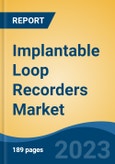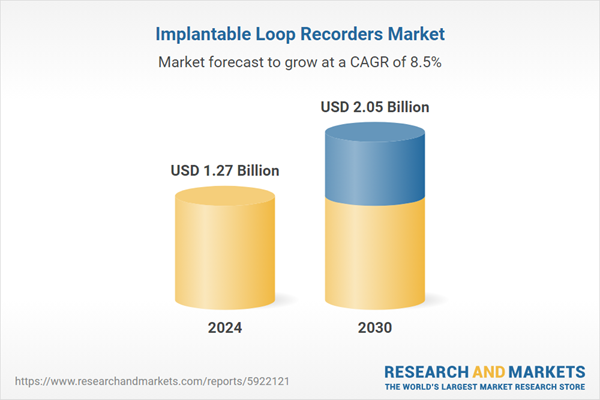Speak directly to the analyst to clarify any post sales queries you may have.
10% Free customizationThis report comes with 10% free customization, enabling you to add data that meets your specific business needs.
As cardiology increasingly adopts data-driven approaches for diagnosis and treatment, ILRs are gaining prominence for their ability to provide prolonged, uninterrupted monitoring. For example, a May 2024 study published in Open Heart revealed that ILRs were more effective than external monitors in detecting atrial fibrillation and initiating treatment after stroke. However, the study also noted that ILRs were linked with higher costs and showed no mortality benefit over external continuous monitors.
Key Market Drivers
Rising Incidence of Cardiac Arrhythmias
The growing prevalence of cardiac arrhythmias globally is a major factor fueling the demand for implantable loop recorders. These devices are increasingly used to detect and monitor irregular heart rhythms such as atrial fibrillation, tachycardia, and bradycardia, which can lead to serious complications including stroke and heart failure. As populations age and sedentary lifestyles become more widespread, these conditions are expected to become more common. According to the CDC's October 2024 data, cardiovascular disease remains the leading cause of death, with one person dying every 33 seconds in the United States alone. ILRs provide an effective tool for diagnosing elusive arrhythmias, contributing to timely intervention and treatment.Key Market Challenges
Cost and Reimbursement Issues
Despite the clinical value of ILRs, their high cost remains a major barrier to broader adoption. The total expense includes the device, implantation procedure, and associated remote monitoring infrastructure, making the technology less accessible to underserved populations and in regions with limited healthcare resources. Additionally, reimbursement for ILRs varies widely by country and healthcare system, creating financial uncertainty for both providers and patients. Limited insurance coverage in certain markets further complicates the decision to adopt ILRs, especially when cost-effective alternatives exist.Key Market Trends
Remote Monitoring Capabilities
The integration of remote monitoring technology in implantable loop recorders has become a significant trend shaping the market. Modern ILRs enable real-time transmission of cardiac data to healthcare providers via connected platforms, reducing the need for frequent clinic visits. This not only improves convenience for patients - especially those in remote or rural areas - but also enhances clinical decision-making through timely access to actionable data. Remote monitoring supports proactive care, allowing clinicians to intervene early in the event of abnormal heart rhythms, ultimately improving patient outcomes and optimizing resource utilization in healthcare systems.Key Players Profiled in this Implantable Loop Recorders Market Report
- Abbott Laboratories Inc
- Medtronic Plc.
- Biotronik Inc.
- Boston Scientific Corporation
- Vectorious
- Angel Medical Systems Inc
Report Scope:
In this report, the Global Implantable Loop Recorders Market has been segmented into the following categories, in addition to the industry trends which have also been detailed below:Implantable Loop Recorders Market, by Application Type:
- Cardiac Arrhythmia
- Atrial Fibrillation
- Cardiac Syncope
Implantable Loop Recorders Market, by End User:
- Hospitals & Clinics
- Ambulatory Care Centers
- Others
Implantable Loop Recorders Market, by Region:
- North America
- United States
- Canada
- Mexico
- Europe
- France
- United Kingdom
- Italy
- Germany
- Spain
- Asia-Pacific
- China
- India
- Japan
- Australia
- South Korea
- South America
- Brazil
- Argentina
- Colombia
- Middle East & Africa
- South Africa
- Saudi Arabia
- UAE
- Egypt
Competitive Landscape
Company Profiles: Detailed analysis of the major companies present in the Global Implantable Loop Recorders Market.Available Customizations:
With the given market data, the publisher offers customizations according to a company's specific needs. The following customization options are available for the report.Company Information
- Detailed analysis and profiling of additional market players (up to five).
This product will be delivered within 1-3 business days.
Table of Contents
Companies Mentioned
The leading companies profiled in this Implantable Loop Recorders market report include:- Abbott Laboratories Inc
- Medtronic Plc.
- Biotronik Inc.
- Boston Scientific Corporation
- Vectorious
- Angel Medical Systems Inc
Table Information
| Report Attribute | Details |
|---|---|
| No. of Pages | 180 |
| Published | May 2025 |
| Forecast Period | 2024 - 2030 |
| Estimated Market Value ( USD | $ 1.27 Billion |
| Forecasted Market Value ( USD | $ 2.05 Billion |
| Compound Annual Growth Rate | 8.4% |
| Regions Covered | Global |
| No. of Companies Mentioned | 7 |









